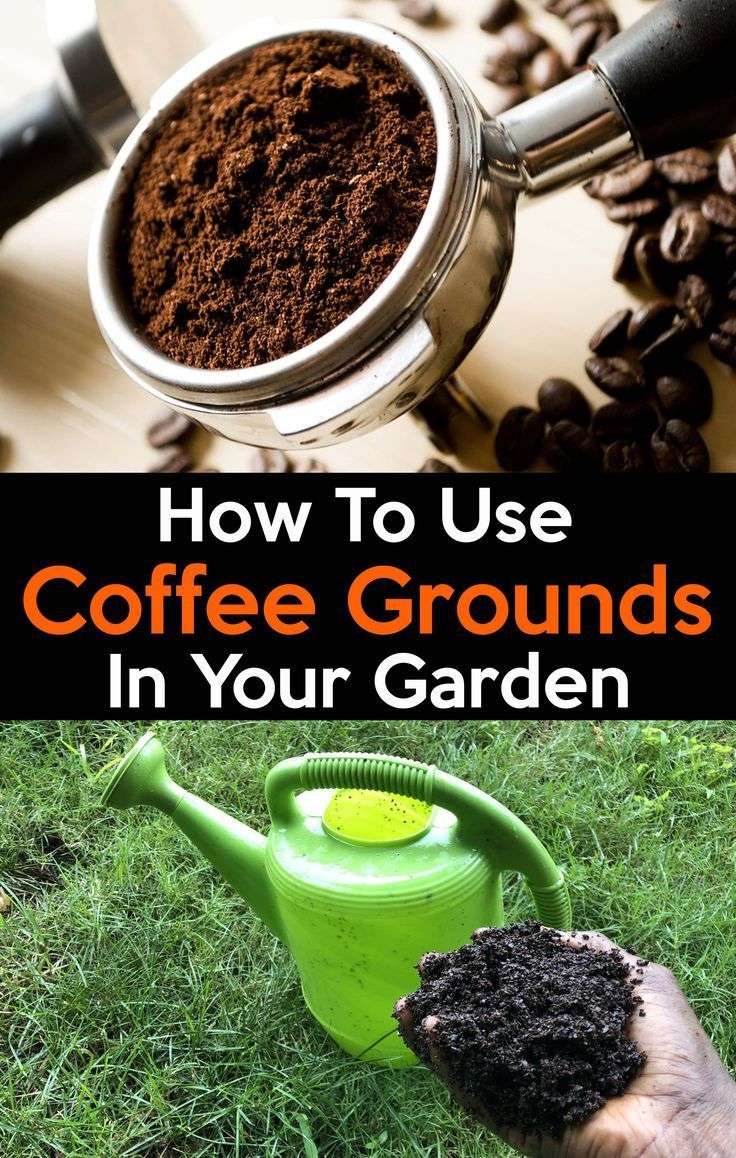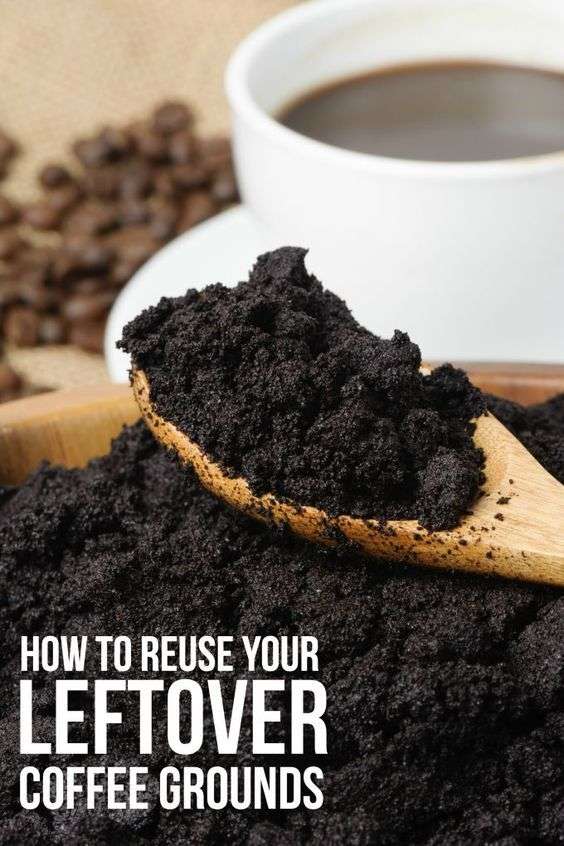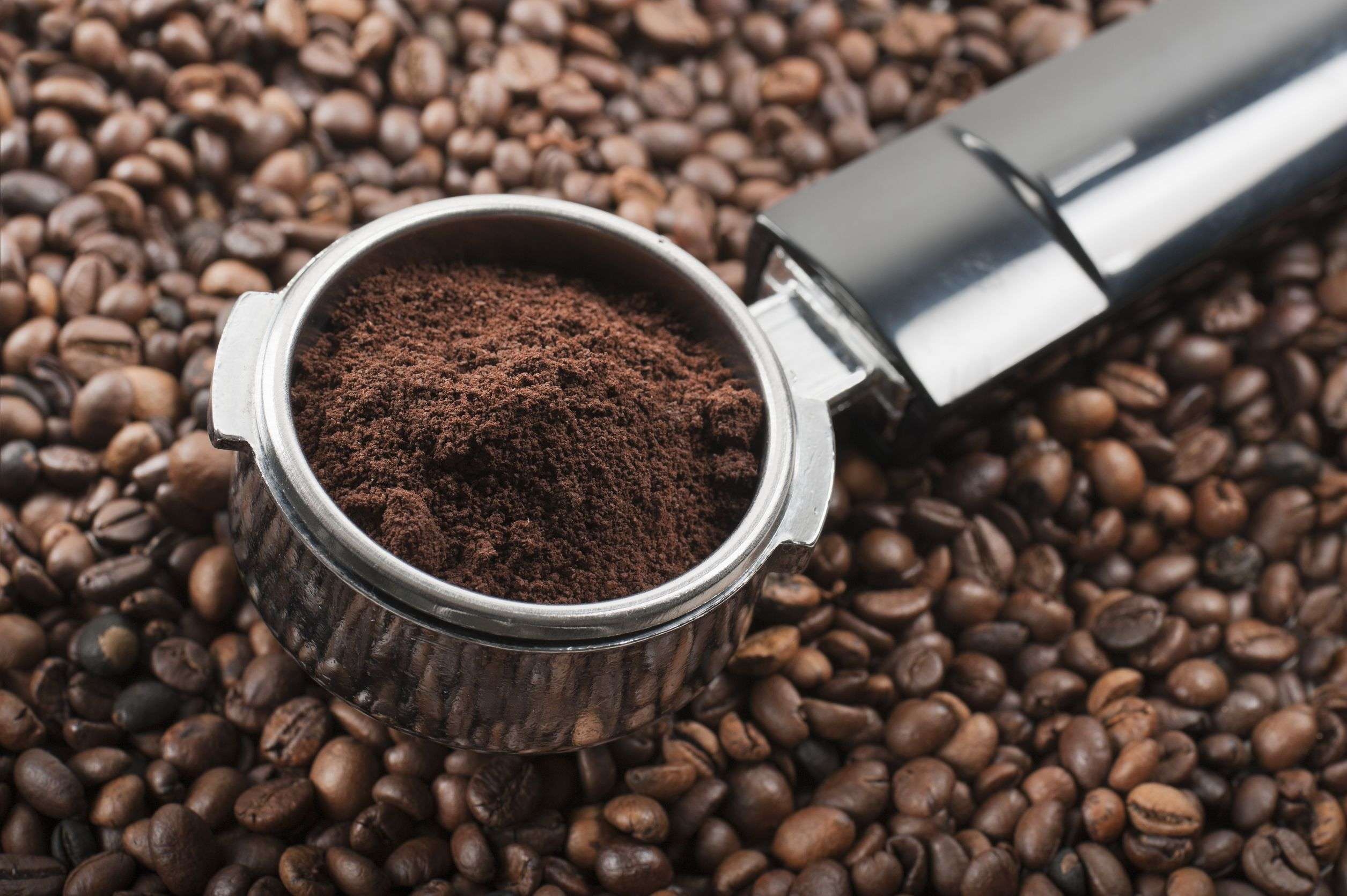Benefits Of Using Coffee Grounds In The Garden As Fertilizer
Is coffee good for plants? Yes. The benefits of coffee grounds in the garden are fourfold.
- Earthworm attraction
Aeration. Compacted soil is a problem for plants because the soil is compressed, meaning the roots of the plant are unable to get what they need. Aeration breaks up the soil and creates small holes through which oxygen, nutrients, and water can reach the roots. Healthy roots can become strong, and as a result, your plants strengthen.
Water Retention. Water retention is a problem in dry and arid regions, where droughts are common. Even drought resistant plants are unable to get enough water, and they end up wilting and dying. Coffee grounds improve water retention in soil, and improved water retention means the plants will be able to do more with less water.
Drainage. On the other end of the water retention spectrum, poor drainage creates stagnant water and leave your plants vulnerable to diseases.
Soil with good drainage ensures that the roots of the plant can receive the water they need while letting the excess flow away which helps to get rid of soil gnats. Coffee grounds help to break down the soil and allow for better drainage.
Earthworms. Love them or hate them, worms are fantastic for gardens. They move through the soil by tunneling, which creates natural vents through which oxygen and water can flow.
How to Use Coffee as a Fertilizer
What about Soil pH?
You may have heard that coffee grounds will alter the pH level of your garden.
Deodorize Carpet From Pet Odors
Coffee grounds like to soak up all the odors around them. So, if you ever have an accident with your beloved pet, then put some dried coffee grounds into a filter, tie the filter at the top, and place it on top of a pet stain. Let the wrap sit on top of the stain overnight and watch it disappear. You can also use dried coffee grounds to remove the musky odor from the carpet. In order to do that, simply spread it on the carpet, let it sit for a few hours and use a powerful vacuum cleaner to revive your carpet.
Coffee Grounds Cockroach Trap
Apparently, cockroaches are attracted to the smell of coffee grounds .
Homesteady has instructions for making a DIY cockroach trap using old coffee grounds.
They suggest filling large glass jars about halfway with water and placing small cups of moistened coffee grinds inside each jar. The roaches are attracted to the scent of the coffee grinds and enter the jar.Once the roaches crawl inside the jar, they are unable to escape.
You May Like: Flavia Fusion
Coffee Grounds For Mulch
Spreading layers of coffee grounds as mulch is beneficial when in lower quantity. Coffee grounds shouldnt exceed more than 25% of the mulch mix.
- Never layer the coffee grounds pure in a thick layer.
- The fine particles, when they dry out, form a watertight barrier. Only heavy rains and day-long drizzles soften it enough that water will reach the ground underneath.
- Always add other materials like river sand, compost and regular garden soil to make a balanced mix.
- Alternatively, let the grounds dry. This makes them easy to sprinkle on the ground in a thin layer.
Additionally, excess traces of caffeine from the ground coffee might have detrimental effects on some plants. If there are too much coffee grounds in the soil, plants will grow slower or stunted until such a time that soil organisms are able to break the coffee down.
- This is especially true for seedlings, when only pure coffee grounds are used.
- Coffee grounds will not kill grown plants. It just takes time for them to recover in case of excess amounts.
Can You Water Plants With Leftover Coffee

If you have a little coffee leftover from your brew, you can use it to water your acid-loving houseplants like Dieffenbachia, African violets, and moth orchids. Only do this once a week to prevent making the soil too acidic.
It is a good idea to dilute the liquid coffee with water before using it for your house plants. Keep an eye out for signs of nutrient burn yellowing leaves or crispy leaf margins.
Read Also: Starbucks Nitro Cold Brew Cans Caffeine
What About Potted Plants
If you dont have a garden but still want to make use of your grounds you are in luck! The same benefits and principles as above apply to indoor plants. You still need to keep the needs of the plant in mind.
If using fresh grounds make sure the plant likes acidic soil. Dont let the grounds form clumps or barriers that will prevent water from reaching the plant. For the most part, you wont have an issue if you compost it first.
Additionally, you will need to use a small number of coffee grounds per pot. Unless you have very large pots you will not need much.
Avoid Coffee Grounds For Some Plants
While gardens can benefit from coffee grounds, some plants aren’t known to thrive with them in the mix. Farming Method has a list of plants averse to it, including lavender, orchids, and pothos. In addition, studies have shown that broccoli, leeks, radish, viola, and sunflower also aren’t fans of coffee grounds, Constant Delights notes. Because caffeine inhibits the formation of roots in these plants , it’s best not to apply it near them.
Don’t Miss: Nespresso Vertuo Pods Caffeine Content
Using Coffee Grounds Reduces Food Waste
Admittedly, coffee grounds arent the largest source of food waste. However, every little bit counts, and it all adds up. If youre already composting, then your coffee grounds and coffee filters can be composted, which means just a little less is going into the garbage every day. Using coffee grounds in your garden is an easy way to make your home and life slightly more sustainable.
Reducing food waste is good for the environment, but there are other ways to make a larger impact. The vast majority of food waste and pollution comes from large companies, not individuals. The best way to protect the planet is to let companies and legislators know that you care about the environment, either through letters, emails, or phone calls. This can be intimidating sometimes, but its much easier with friends or neighbors.
Consider looking for local environmental groups, or form one yourself. You can get together with your community members to write petitions or letters, clean up local streams or parks, start a community garden and brainstorm new ways to help your community accomplish its environmental goals. Of course, you can all compost your coffee grounds as well.
Make A Cockroach Trap
Fill a can or jar with an inch or two of moistened coffee grounds, then line the container’s neck with extra-sticky double-sided tape. The scent will draw the roaches into the trap.
If you cant get enough of doing household tasks that involve all things coffee, read TOHs 10 Uses for Coffee Filters.
Also Check: Caffeine In Folgers Instant Coffee Crystals
How To Store Used Coffee Grounds For Gardening
If youre a gardener, you may find that you want more coffee grounds than you can produce yourself. Many coffee shops offer used coffee grounds bagged for gardeners to use.
Be aware that since used coffee grounds contain a fair amount of moisture, if youre not putting them directly in your garden or compost, you cant simply leave them in a bag or container or theyll grow mold.
Until youre ready to use coffee grounds in the garden, you can store smaller amounts in the refrigerator. For larger amounts, youll want to dry them, either in the sun or in the oven.
To dry coffee grounds in the sun:
Spread coffee grounds on newspapers in layers 1-2 inches thick and place in a sunny area. Turn the grounds daily to allow them to dry completely.
Take them to a sheltered place if rain is expected.
To dry coffee grounds in the oven:
Spread coffee grounds in a thin layer on cookie sheets and place in an oven heated to its lowest temperature .
Turn off the heat and leave the coffee grounds to dry.
When the oven starts to cool, stir coffee grounds to expose wetter ones to heat and turn the oven back on, turning it off when its reached 180 degrees.
Repeat steps above until the coffee grounds have dried completely, then store in an airtight container till ready for use.
Do you use coffee grounds in the garden?Whats worked for you?
Save this info on using coffee grounds in the garden for later!
What Is A Cold Brew
Before we jump right into talking about grind sizes, lets take a second to recap what a cold brew is.
Cold brew is a type of cold coffee thats prepared by steeping coffee grounds in cold water instead of hot.
Because the coffee is made using cold water, you have to steep it for longer. Most baristas recommend steeping cold brew for between 16 and 18 hours.
The longer extraction time results in a smooth, rich coffee.
On top of that, the cold extraction method pulls more flavor and caffeine out of the beans compared to hot coffee. That makes for a perfect pick-me-up on a sleepy afternoon!
Cold brew has been around since the 1600s, but in recent years, it really become popular. Today, youll have no problem finding it in just about any coffee shop you walk into!
Don’t Miss: Energizing Starbucks Drinks
How To Neutralize Odors With Coffee Grounds
The smell of coffee is incredible. That’s just a fact. But did you know that just the smell of coffee can provide many of the benefits we crave from our morning cup? The aroma of coffee can improve concentration, memory, and mood. So, why arent we using it in more places?
Place ground coffee beans in a clean sock, small paper bag, or tea bag to create a travel-sized air freshener. If using a paper bag, seal the bag and use a hole punch to allow the fragrance to escape. These are great for placing in your home, hanging on your rearview mirror, or nestling under your car seat.
Another simple way to incorporate the aroma of coffee is by placing coffee beans or coffee grounds in a jar or dish in your home. It won’t be overpowering, just enough to get those cognitive processes in gear. Likewise, placing a bowl of used coffee beans in your refrigerator can neutralize smells from old or overly fragrant foods.
Coffee Pro Tip: Since cold brew is typically done in large batches, youll get more cold brew coffee grounds than youd get by brewing one cup.
Amazing Things To Do With Your Used Coffee Grounds

Garrett Oden
Whats your usual method for disposing of used coffee grounds? Does their destiny lie in the garbage disposal? The trash? Do you toss them out the window?
As it turns out, the coffee experience doesnt have to end with the last sip of your mug. Those used coffee grounds are capable of an encore. They just keep giving and giving.
There are many things you can do with your used coffee grounds, but a lot of them are burdensome or unrealistic. Were not interested in wasting your time, so weve narrowed this list down to just eight.
Our eight favorite uses of used coffee grounds are simple, practical, and rewarding. Check them out and put your used grounds back to work.
Don’t Miss: Level Thrive Boost
How To Use Coffee Grounds To Benefit Indoor Plants
For organic gardeners, used coffee grounds are a valuable resource. Even if you have just a few house plants, it is well worthwhile to collect up your coffee grounds and use them to benefit your houseplants. It is a fantastic way to recycle your coffee grounds so that they do not end up in a landfill.
There are different ways that you can add coffee grounds to plants soil. Some ways work better than others.
What Is The Best Way To Use Coffee Grounds In The Garden
According to Coffee Directs coffee expert Lewis Spencer, used coffee grounds contain a significant quantity of nitrogen and potassium, and phosphorus, which are left over from using a coffee maker.
These characteristics make them ideal for garden tasks like composting. Its a creative approach to repurpose something that would otherwise wind up in the trash.
Recommended Reading: Caffeine In Folgers Coffee
Why Use Coffee Grounds For Gardening
It’s spring which means gardeners are itching to get their hands in the dirt! Well, for acid-loving plants, here’s one ingredient that’s a must, coffee grounds.
Coffee contains nitrogen, phosphorus, potassium, and trace minerals, as well as properties that help to stimulate the growth of beneficial microbes. When grounds are stored they tend to develop green or blue-green fungus that looks like mold.
The green fungus called Trichoderma, is very beneficial to the soil. The blue-green fungus is moderately beneficial. At any rate, moldy coffee is good to use directly in the garden, on your houseplants, or in the compost pile.
Take a look at some of the benefits.
Add Shine To Darker Hair
Brunettes and darker redheads can turn up the shine in their hair by rinsing their hair with strong, cooled coffee. Or for a darker, more vibrant shine, steep used coffee grounds in 2 cups hot water for 15 minutes, then allow it to cool before rinsing your hair with it.
More Ideas You’ll Love
Don’t Miss: Does Sonic Green Tea Have Caffeine
How To Compost Coffee Grounds
- Sprinkle the coffee grounds directly on the soil and mix them into the soil. But, remember, if you allow coffee grounds to dry out, they can block the water in mulch, similar to dry peat moss.
- Add coffee grounds to your compost pile by layering the components using:
- 1/3 of leaves
- 1/3 of fresh grass clippings
- And 1/3 of coffee grounds.
See also: Top 6 Electric Kitchen Composters On The Market
Coffee Grounds For Gardening Pros Cons And How To Use Them
Coffee grounds are often used to remove odors, prevent insects & pests, and scrub the body. But did you know that gardeners also use the waste of the coffee to fertilize the garden, improve the soil quality, and so on?
But some dont recommend them for gardening for some downsides of coffee grounds. So keep reading to learn into details about the coffee grounds and how to use them properly in the garden.
Also Check: How Much Caffeine In Snapple Raspberry Tea
Can You Put Too Many Coffee Grounds In Your Garden
In a word, yes. This isn’t because coffee grounds will acidify your soil , but because, as Spencer explains, ‘the small particles can clump together creating a water-resistant barrier, stunting plant growth.’
So, ‘always use the grounds sparingly and never in large quantities. Coffee grounds will not kill grown plants, it will just take some recovery time in the event of excess application. To rectify using too much, use a rake to separate the particles into finer bits.
Coffee Ground In Compost

Throwing spent coffee grounds into your compost pile is all it takes to compost coffee grounds. Coffee filters that have been used can also be composted.
Coffee grounds should be composted. Compost material is divided into two categories: brown and green. Although your coffee grounds are brown in color, they are classified as green material in compost jargon, which means they are high in nitrogen.
The nitrogen content of coffee grinds is around 1.45%. Food scraps and grass clippings are two more green compost components.
Green compost material is made by mixing coffee grinds and old paper coffee filters into your compost. It must, however, be supplemented with brown compost material, such as dry leaves and newspapers.
You should use brown compost material in a 4-to-1 ratio with green compost material. If your compost pile has too much green material, it will begin to stink. The compost pile will not heat up if you dont have enough.
You May Like: Can I Put Sugar In My Coffee While Intermittent Fasting
How To Use Coffee Grounds In The Garden
Learn how to use coffee grounds in the garden. Yes, coffee! You have a fantastic source of organic matter right at your fingers if you prepare a daily pot of coffee.
You may be wondering about composting with coffee grounds if you brew your cup of coffee every day or if your local coffee shop has started to throw out bags of spent coffee. Coffee grounds may brighten your garden in a variety of ways.
Continue reading for more information about coffee grounds and gardening.
Fresh Ground Coffee Is Good For Acid
You can add fresh coffee grounds around plants like:
- and all sorts of heath plants.
There are also many vegetables which like slightly acidic soil including root crops like radish and carrot. All you need to do is mix a bit of fresh ground coffee in the soil during planting time.
- Tomato, on the other hand, doesnt grow well when coffee grounds are added in the soil.
Also Check: Sonic Cold Brew Review